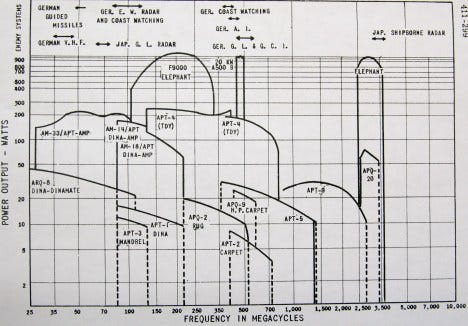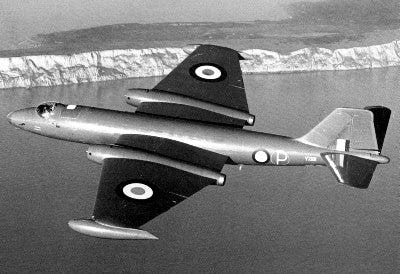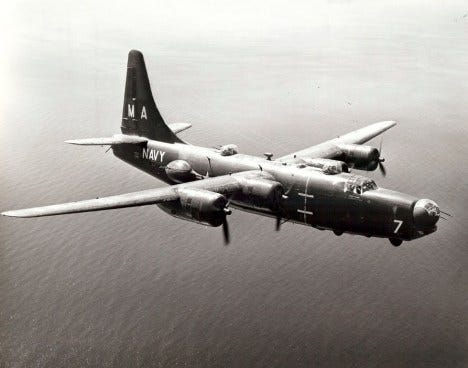This is Part VII of “The Secret History of Silicon Valley.” Read Part I here, Part II here, Part III here, Part IVa here, Part IVb here, Part V here, Part VIa here and Part VIb here.
These next series of posts chronicles the untold story of how one professor returning from one war decides to enlist Stanford University in waging the next one and by accident, laid the foundation for Silicon Valley, venture capital and entrepreneurship as we know it today.
These posts cover two distinct periods – the first, the rise of “Microwave Valley” chronicles the decade of 1946-1956 as Stanford University became the hub of military/industry contracting in the Bay Area.
The second series of posts, the rise of “Spy Satellite Valley,” starts in 1956 with two game-changing events– one very public – the valley’s first semiconductor company and one very, very private – the valley as the home of the first optical and ELINT spy satellites and submarine-launched ballistic missiles. That story ends in 1969 with campus riots at Stanford during the Vietnam War.
————–
These posts will make a lot more sense if you look at the earlier Secret History posts. If you read only one previous post, read this one (or this one.)
The Birth of Entrepreneurship in The Hot Cold War
Silicon Valley entrepreneurship was born in the middle of a secret war with the Soviet Union. It’s a war you probably never heard of since most of it was classified, and both parties never wanted it public lest it got out of hand. Yet it was a war in which tens of thousands of Americans fought and hundreds died. Frederick Terman, Stanford’s Dean of Engineering, enlisted Stanford University as a major arms suppliers in this war. In doing so he accidentally launched entrepreneurship in Silicon Valley – with the help of the U.S. military, the CIA and the National Security Agency.
Stanford as a Center of Microwave and Electronics
In 1946 after running the military’s secret 800 person Electronic Warfare Lab at Harvard, Fred Terman returned to Stanford as the dean of the engineering school. Terman’s goal was to build Stanford’s electrical engineering department into a center of excellence focused on microwaves and electronics. Having already assembled one of most advanced electronic labs in World War II, Terman was one of the few academics who could do it.
Terman’s first step was to recruit 11 former members of his staff from the Harvard Radio Research Lab — “Congratulations, you’re now Stanford faculty.” Not only were they all great researchers, but they also had just spent three years building electronic warfare systems that were used in World War II. They would become the core of Stanford’s new Electronics Research Lab (ERL.) While officially in the electrical engineering department, the lab reported directly to Terman.
Next, Terman used his military contacts to secure funding for the Lab from the Office of Naval Research, the Air Force and the Army Signal Corps. (Although the country had returned to peace, some in the military wanted to preserve our ability to fight the next war.) By 1947 the U.S. military was funding half of Stanford’s engineering school budget. Terman proudly pointed out that only Stanford, MIT and Harvard had a military sponsored electronics program.
Stanford Leads in Electronic Intelligence and Electronic Warfare
In the 1950’s Stanford Engineering Research Lab (ERL) made major contributions to electronic intelligence and electronic warfare. Its basic research focused on three areas: microwave receiving and transmitting tubes, radar detection and deception techniques and understanding the earth’s ionosphere.
Stanford became one of the leading research centers in advancing the state of microwave tubes including the klystron which could provide high-power microwave in pulses, magnetrons which could provide continuous wave microwave power, and backward wave oscillators and traveling wave tubes – both electronically tunable microwave tubes.
Stanford’s research on the earth’s ionosphere would lead to meteor-burst communication systems and Over the Horizon Radar used by the NSA and CIA to detect Soviet and Chinese missile tests and ultimately to the research that made Stealth technologies possible.
Its studies in radar detection and deception techniques would lead Stanford to the applied part of it mission. Stanford would build prototypes of electronic intelligence receivers (high probability of intercept/rapid scan receivers) for use by the military. These applied systems were prototypes of the jamming devices found on our bombers and receivers found in NSA ground stations and the fleet of ELINT aircraft flying around and in the Soviet Union and later on in the U-2, SR-71 and ELINT ferret subsatellites.
Later posts will talk about these technologies and the startups that spun out of Stanford to build them. But first, to understand what happened at Stanford and in Silicon Valley under Fred Terman, some context about the Cold War is helpful. (Skip the next section if you’re a history major.)
The Cold War
After World War II ended, our wartime ally the Soviet Union kept its army in Eastern Europe and forcibly installed Communist governments in its occupied territories. Meanwhile the U.S. demobilized its army, sent its troops home, scrapped most of its Air Force and mothballed almost all its Navy. As tensions rose, there was a growing fear that the Soviets could invade and occupy all of Western Europe.
In 1949, the Soviets exploded their first nuclear weapon and ended the U.S monopoly on atomic weaponry. That same year China fell to the communists under Mao Zedong, and the Nationalist government retreated to Taiwan. A year later the Korean War turned the cold war hot, as communist North Koreans attacked and overran most of South Korea (except for a small defensive perimeter in the south.) American and United Nations troops entered the war fighting North Koreans and then Communist Chinese ground troops, and Soviet fighter pilots for three years. 34,000 U.S. soldiers died in battle.
To the U.S. the Soviet Union seemed bent on world conquest with Korea just a warm-up for an atomic war with massive casualties. (This was not an unreasonable supposition after a conventional world war which had left 50 million dead.) Faced with the reality of the Korean War, the U.S. began to rebuild its military. But now the Soviet Union was its target enemy, and nuclear weapons had become the principal instrument of offense. Instead of rebuilding its WWII forces, the U.S. military embraced new technologies (jets, electronics, missiles, nuclear subs) and built entirely new weapon systems (bombers with nuclear weapons, ICBMs, SLBM’s) for a new era of international conflict.
Europe, completely outnumbered and outgunned by the Soviet Union, built the North Atlantic Treaty Organization (NATO) as a bulwark against ground Soviet attack. And the U.S. planned strikes with nuclear armed bombers if war in Europe broke out.
Stanford’s Electronic Research Lab (ERL) which had focused on basic research on microwave tubes from 1946 was about to scale up for the Cold War.
Smarter Intelligence
One of the major differences between the war with Germany and the cold war confrontation with the Soviet Union had to do with access. The Soviet Union was a closed country. Unlike Germany in World War II, the U.S. could not fly across the Soviet Union to learn how their defenses were set up. We did not have radar maps of their cities. The Soviet’s secrecy fed our cold war paranoia. The U.S. was determined to find out what was going on inside. And the way we were going to do it was with electronic/signals intelligence.
But the technology that supported intelligence gathering against our WW II enemies was not sufficient to penetrate the Soviet Union. The U.S. military had to develop new ways to collect intelligence. The engineering department and labs that Fred Terman established at Stanford University would play a key role in advancing electronic intercept and jamming technology to support the more sophisticated intelligence systems that the Cold War required.
The Air Force Needs to Know
By the Korean War, U.S. policy held that the Air Force, carrying nuclear weapons into the Soviet Union, would be the means to fight World War III.
Through World War II, the U.S. Air Force had been a part of the U.S. Army. It split off into a separate service in 1947. By the 1950’s, the Strategic Air Command (SAC) had become the U.S. Air Force’s long range bombing arm and the designated instrument of Armageddon.
On the other side of the Iron Curtain, the defense of the Soviet Motherland lay with the Soviet Air Defense Forces, called PVO Strany, a separate branch of the Soviet military formed in 1948 designed to detect U.S. bomber raids, target and aim radar-guided weapons and destroy the U.S. bombers.
SAC needed intelligence to understand the components of the PVO Strany air defense system in order to shut them down and make them ineffective so our bombers with their nuclear payloads could reach their targets. (The information we collected would be passed on to contractors who would build jamming devices the bombers would carry.) It sought answers to tactical questions like: What was the Radar Order of Battle a penetrating bomber would face? (Were there holes in their radar coverage our bombers could sneak through? What was the best altitude to avoid the Soviet defenses?) What were the different types of Soviet fighter planes? How many? How effective? What about the anti-aircraft (AAA) gun defenses? In addition the Soviets were adding a new type of defensive radar-guided weapon called the Surface to Air Missile (SAM).
The Strategic Air Command also needed to know what the navigational waypoints and the target would look like on their air-to-ground bombing radars. (These radars painted a map-like picture of the ground and prior to GPS, this is how bombers navigated their way to the target.)
And on top of all this the Strategic Air Command needed to understand the current state of the Soviet Air Defense Force readiness and deployment updated on a daily basis.
The CIA Needs to Know
While the Air Force was working on collecting intelligence to execute their tactical missions, the CIA, founded in 1947, was responsible for providing U.S. political leadership with a much bigger picture. They developed the National Intelligence Estimate – a series of reports which summarized their judgment about the size of the Russian threat. Also seeking to learn more about the Soviet Union’s offensive weapon systems, the CIA wanted intelligence to help them understand: What type of strategic bombers did the Soviets have? How many did they have? How would they reach the U.S.? How would we know if they were coming? (Have they moved to their forward operating bases in the Artic?) The same was true about the Soviet defensive systems – how many fighters would they build and of what type? How many Surface to Air Missiles – what was their range and accuracy?
And by the mid 1950’s the Soviets were testing ballistic missiles, both intermediate range that could reach Europe and intercontinental range that could reach the U.S. Whatwas their range? What was their accuracy? How big of a nuclear warhead could they carry (throw weight and yield)? The military needed to answer these same questions about the nuclear armed missiles the Soviets were putting on their submarine force.
To give our leadership an estimate of the Soviet’s nuclear production capacity, the CIA also had to estimate how many nuclear weapons could the Soviet Union make. Where were their production facilities? What was the yield of the weapons and their weight and size?
Throughout the 1950’s the CIA’s Office of Scientific Intelligence was heavily involved in the development of Electronics Intercept and Electronic Warfare Intelligence – and Stanford and the emerging startups around it would provide the systems and concepts to help.
The NSA and ELINT
In the 1950’s the Strategic Air Command and the U.S. Navy were the airborne ELINTassets for the U.S. Beginning in the mid/late 1950’s the National Security Agency (NSA) starting taking more and more responsibility for collection – first in communications intelligence, then in signals and telemetry intelligence. The NSA ultimately built up hundreds of ground stations, satellites and aircraft manned by tens of thousands servicemen (under the cover of the Air Force Security Service, Army Security Agency and the Naval Security Group.)
The “Hot” Cold War
Remember the Soviet Union was a closed country. To collect the intelligence to answer its questions about the Soviet threat, the U.S. military resurrected the signals Intelligence lessons and skills we invented in World War II. Starting in 1946 ELINT aircraft had been probing and overflying the Soviet Union. SAC, the CIA, the Navy and our British allies flew modified planes called Ferrets around the periphery of the Soviet Union to understand their air defense system (the crews were called Crows). (What isn’t well known is that the U.S. and Britain flew planes on deep penetration missions into and across the Soviet Union numerous times – well before a U-2 spy plane was shot down over the Soviet Union in 1960.)
The Air Force adopted a cover story that these were weather data gathering missions. These flights were no secret to the Soviets, (given the sheer number of surveillance flights around the Soviet Union it’s surprising they didn’t need their own air traffic control system,) and they started to protest diplomatically in 1948. When our flights continued, the Soviets took direct action. In 1950, two months before the Korean War started, the Soviets shot down an ELINT plane over the Baltic. All ten crew members were killed. This was the beginning of a Soviet policy to stop ignoring incursions. They would attempt to force the ELINT planes to land in the Soviet Union or they would destroy them. Every year through the the 1950’s and the early ’60’s the Soviets attacked and shot down at least one of our ELINT ferret aircraft. This was a deadly game.
We kept on probing their defenses convinced that it was in our national interest to continue. The low-level conflict continued until the height of the Cuban Missile Crisis when the local Soviet commander shot down a U-2 over Cuba. Both countries realized that a miscalculation could have been a catalyst for World War III and the Soviets stop attacks on U.S. spyplanes. (The Communist Chinese continued to shoot down U-2’s flown by Nationalist Chinese pilots until 1970, and the Soviet Union accidently attacked two Korean airline passenger planes in the Far East, one damaged in 1978 and one destroyed in 1983.)
During the Cold War 32 U.S. ELINT planes were shot down by Soviet pilots with 225 U.S. airmen killed. (The numbers vary depending on the sources you read.) Regardless of the number, this was a deadly shooting war.
Stanford and an emerging set of Silicon Valley startups would be deeply involved in designing the technologies, techniques and ELINT systems on these planes. Microwave Valley was about to take off.
Details in the next post, Part VIII of the Secret History of Silicon Valley.








